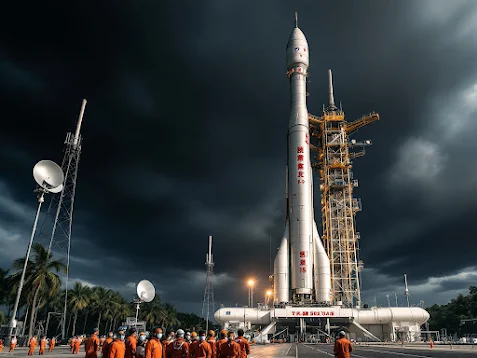On Saturday, March 29, 2025, China launched a secret satellite TJS-16 from the Wenchang Cosmodrome on Hainan Island using a launch vehicle Changzheng-7A (Long March 7A). The launch took place at 12:05 p.m. Eastern time (16:05 UTC), and an hour later, the China Aerospace Science and Technology Corporation (CASC) confirmed the success of the mission.
Satellite TJS-16 (Tongxin Jishu Shiyan-16) is officially declared as an experimental platform for testing multiband and high-speed satellite communications. However, as with previous TJS series devices, technical details, images and exact specifications are not disclosed. Experts suggest that such missions may be related to the development of military space technologies or the strengthening of national security.
This launch became the 16th orbital for China in 2025, continuing a series of active actions in the space sector. Earlier, on March 9, TJS-15 was launched from the Xichang cosmodrome, and in January — TJS-14, which also tested communications. Over the past 18 months, China has launched six TJS satellites, including vehicles in the highly elliptical Molniya orbit.
The secrecy of the TJS program raises questions among international analysts. Some attribute this to the expansion of China's geostationary presence and preparations for competition in space. At the same time, Beijing is actively developing satellite constellations for civil and military needs, strengthening its position in Asia and beyond.

















.jpg)

No comments:
Post a Comment